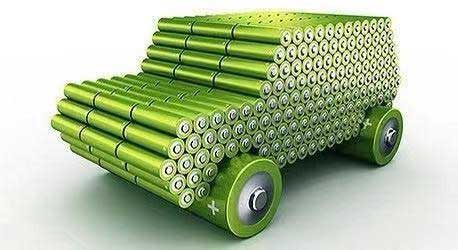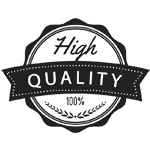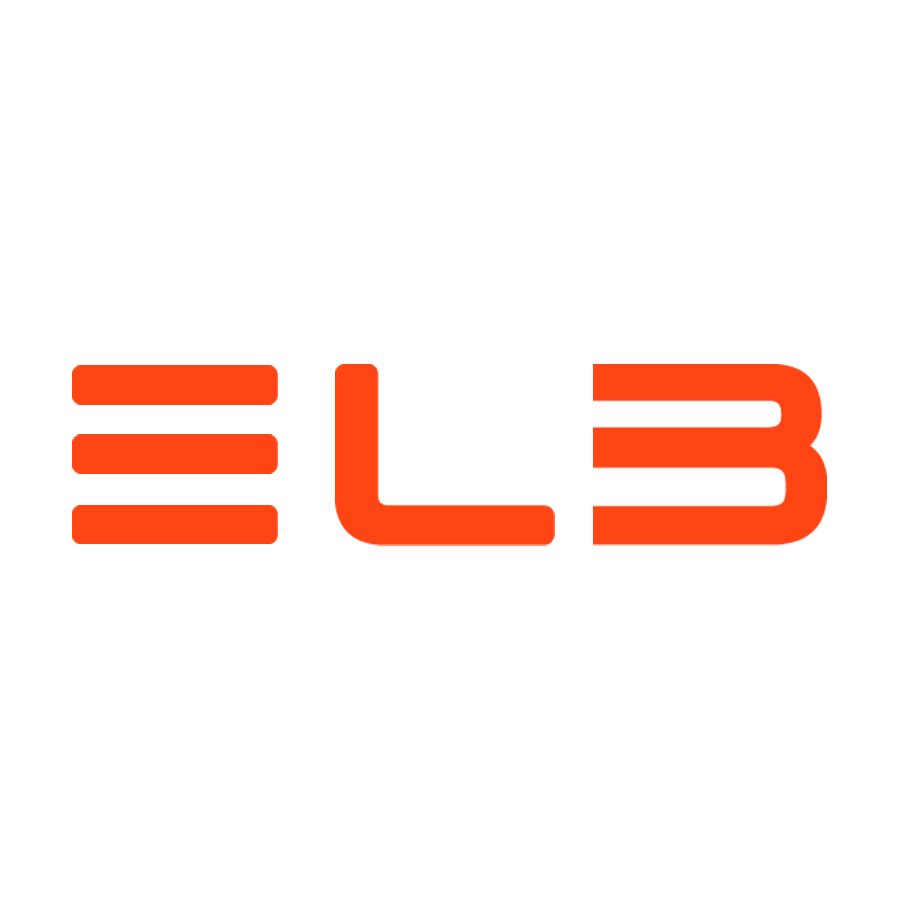BLOG
Overview of the operation of China's lithium ion battery industry
China is the world’s largest producer of lithium-ion batteries. Since 2015, with the development of China’s new energy vehicles, the scale of lithium-ion batteries in China has been growing rapidly. Since 2015, China has surpassed South Korea and Japan, ranking first in the world, and this share is gradually expanding. In 2020, though the impact of COVID-19 and the impact of the entire subsidy decline, the growth of the industry slowed down, but in the consumption, energy storage and other markets, China’s lithium ion battery accounted for about 53.8% of the world’s total. According to the statistics of China Chemical Physics Industry Association, in 2020, the scale of lithium batteries in China was 2006 billion yuan, an increase of 9.1% over 19 years, and the output reached 1570g watt hours, a year-on-year increase of 15.1%. The growth of the whole 2021 is mainly due to the rapid growth of new energy vehicles, electric two wheeled vehicles, electric energy tools, lithium-ion batteries for energy storage, etc.

Approximate scale of the three lithium battery markets in 2020?
1. Lithium ion batteries for consumer electronic products,
in 2020, the scale was 82.5 billion, an increase of 5.3% over the previous year, and the output was 61 billion watt hours. The main markets of consumer electronic products are 5g mobile phones, tablet computers, mobile power supplies, power tools, UAVs, vacuum cleaners, wearable devices, etc. The main increase in 2020 may be due to the fact that some international power tool manufacturers led by TTI have increased their procurement of Chinese enterprises and promoted the rapid transformation of the domestic tool battery industry.
2. Power batteries,
that is, the power market dominated by new energy vehicles and electric two wheeled vehicles: the scale will be about 106.5 billion yuan in 2020, and the output will reach 83 billion watt hours.
3. Lithium ion batteries for energy storage,
relatively small, about 11.6 billion yuan, and its output is 13 billion watt hours; However, the growth rate of energy storage is very fast, with an increase of 62% in the previous year, which is mainly due to the increase in the demand for lithium-ion batteries for photovoltaic, wind power and other new energy power storage systems and communication base station energy storage, including household energy storage. Scale of lithium battery market in the first half of 2021: led by the big goal of carbon peak and carbon neutralization, the national lithium-ion battery industry has achieved a rapid growth. According to the preliminary statistical analysis of the association, from January to June this year, the total sales volume of lithium-ion batteries in China was 110 GWH, that is, the scale of 110 billion kwh, an increase of more than 60% over the previous year. Among them, the growth rate of consumer electronic products is about 10%, and its scale is 37 GWH, accounting for 33.6% of the whole lithium battery market. The sales volume of power lithium batteries, especially power lithium batteries for vehicles, was 58 GWH, a year-on-year increase of 174%, accounting for 52.7% of the whole lithium battery scale. Energy storage also grew rapidly in the first half of 2021, with a scale of about 15 GWH, an increase of about 140% year-on-year, accounting for about 13.6% of the overall market scale. China is actually one of the world’s largest exporters of lithium batteries. According to statistics, in the first half of this year, China’s exports of lithium-ion batteries amounted to US $11.469 billion, a year-on-year increase of 83%, and the number of exports reached 1.4 billion, a year-on-year increase of 66.5%. The main export destinations of China are: the United States, Germany, Vietnam, South Korea, China, Hong Kong, Japan, the Netherlands, Spain, India and Slovakia – the top ten destinations. The total export volume of the top ten destinations was 8.7 billion, accounting for 76% of the total export volume in the first half of the year. The export volume of the top ten destinations reached 1.036 billion, accounting for 74.3% of the total export volume.
Characteristics of lithium battery market segments in the first half of this year,
1. New energy vehicles are also the biggest driving force for the growth of lithium-ion batteries.
According to the statistics of the automobile industry association, in the first half of the year, the production and sales of China’s new energy vehicles were 1215000 and 1206000 respectively, a year-on-year increase of 2 times, of which the production and sales of pure electric vehicles were 1022000 and 105000, a year-on-year increase of 2.3 times and 2.2 times. In terms of power battery output, the cumulative output from January to June was 74.7 GWH, with a year-on-year increase of 217.5%, of which the cumulative output of ternary battery was 36.9 GWH, accounting for 49.3% of the total output; Lithium ferric sulfate is 37.7 GWH, accounting for 50.5% of the total output. From the perspective of the installed capacity of new energy vehicles, the installed capacity from January to June was 52.5 GWH, a year-on-year increase of 200.3%, of which the ternary installed capacity was 30.2 GWH, accounting for 57.5% of the total installed capacity, and the lithium ferric sulfate was 22.2 GWH, accounting for 42.3% of the total installed capacity.
2. In terms of industry development, the enterprise concentration of power lithium-ion battery is also further improving.
From January to June, about 53 Enterprises in the new energy vehicle market realized supporting facilities, down from three compared with the previous year. The installed capacity of the top three is 38.1, accounting for about 72.6%. The top five are 44.5, accounting for 84.8%. The top 10 companies have 48.3 GWH, accounting for 92%. The industry concentration is still relatively high. According to our prediction, if the whole year is developed early in 2020, the output of new energy vehicle power battery may exceed 140 GWH, and the installed capacity may reach 125 GWH, which should be almost doubled compared with the previous year. If we add the two wheeled electric bicycles, electric light motorcycles and electric motorcycles, there are about 14 to 15 GWH, so the annual sales of power batteries in 2021 is expected to be about 140 GWH.
3. New energy storage should play a great role in promoting carbon neutralization and carbon peak in the energy field.
In terms of energy storage, new energy storage and 5g communication base stations have driven the rapid growth of new energy. In terms of energy storage this year, the national development and Reform Commission and the national energy administration have successively issued many relevant policies in order to achieve peak carbon and carbon neutralization, build a clean, low-carbon, safe and efficient energy system, and respond to a major decision and deployment made by the CPC Central Committee and the state Council. Therefore, from now on, new energy storage, especially new electrochemical energy storage, will develop rapidly in the next few years. Because the state has issued the guiding opinions on accelerating the development of new energy storage, which proposes to realize the transformation of new energy storage from the initial stage of commercialization to large-scale development by 2025, the technological innovation ability of new energy storage will be significantly improved, the independent and controllable level of core technology and equipment will be greatly improved, and in terms of high safety, low cost, high reliability and long life, Great progress has been made. In general, the installed capacity of new energy electrochemical energy storage should reach more than 30 million KW, so the new energy storage should play a great role in promoting carbon neutralization and carbon peak in the energy field. In addition, in order to implement the goal of 3060, all localities will take the development of new electrochemical energy storage as a necessary supporting project for the development of photovoltaic and wind power projects, and require 10% ~ 15% electrochemical energy storage. The current installed capacity of domestic energy storage: in 2020, the installed capacity of China’s energy storage is 34.8 g watts, mainly pumped storage, accounting for 31.5 g watts, accounting for 90.5% of the whole market. At present, the cumulative installed capacity of electrochemical energy storage is 2.852gw, accounting for 8.2%. In China, electrochemical energy storage market, grid side auxiliary services of new energy storage, grid side energy storage distribution, microgrid and user side energy storage have all developed rapidly.
4. In the whole new electrochemical energy storage, lithium-ion battery accounts for the highest proportion in various application scenarios.
Lithium ion batteries account for about 86% of all new electrochemical energy storage. In the new infrastructure construction of 5g communication at home and abroad, lithium-ion battery has also become the main standby power supply of communication base stations. Therefore, we expect that in the whole year of 2021, the growth of lithium-ion batteries that may store energy will also exceed 130%, and the scale should be 29 or even 30 GWH. Introduction to small lithium-ion batteries (including digital lithium-ion batteries): the traditional market of lithium-ion batteries, including mobile phones, laptops, tablets, electric tools and electric two wheeled vehicles, is the main market of small lithium-ion batteries. At present, driven by the trend of 5g mobile phone replacement, the growth scale of mobile phone lithium-ion battery is about 10%. Last year and this year, due to the impact of the epidemic, people stayed at home for office or online classes, so the demand for notebook computers and tablet computers has increased greatly, with a year-on-year increase of about 15%. Lithium batteries for such tools and lithium batteries for electric two wheeled vehicles should also promote the growth of these small lithium-ion batteries, with an increase of more than 20%. Therefore, from the perspective of 2020, the overall market growth of small lithium-ion batteries is about 10%, and the total scale may be close to about 70 GWH. According to our overall prediction, the total volume of major lithium-ion battery markets may be 220 ~ 240 GWH in 2020, with a year-on-year increase of more than 50%. In the first half of this year, lithium-ion battery enterprises are rapidly expanding production capacity, and the words of various major material enterprises are also accelerating at the same time. In addition, prices continue to rise. Accelerated expansion of battery enterprises: for example, in the first half of the year, there may be a large number of leading enterprises represented by Ningde times, BYD, GuoXuan, AVIC lithium battery, honeycomb energy and Yiwei lithium energy. They have successively announced about more than 20 new projects related to power batteries, and the total investment and construction amount exceeded more than 160 billion, The construction capacity exceeds 350 GWH. This year, the four major materials and main materials are also expanded synchronously, and the new investment scale of the whole industry is huge. Therefore, this year, the test of enterprises is not only the layout of the industrial chain, but also the financing ability. Characteristics and main problems faced by the power battery industry this year: first, on the whole, the sales of vehicles equipped with lithium iron phosphate batteries are rising continuously, and there are more and more models. Feature 2: high end models still follow the route of high nickel, while medium and low-end models follow the route of lithium iron phosphate. Feature 3: the industry is expanding rapidly. With the increase of specific energy, the mileage anxiety has been alleviated, but the charging piles are becoming more and more dense. Main problem: since 2021, there has been varying degrees of shortage of chips and raw materials in the downstream of lithium iron phosphate, so the price has continued to decline. This year, the bottleneck of new energy vehicle materials is mainly lithium hexafluorophosphate in electrolyte, including VC as additives. Judging from the current development, the bottleneck next year may be the battery diaphragm.
Main materials,
Main materials: from January to June this year, the total output of the four major positive materials in the positive material industry was about 450000 tons, an increase of about 140% year-on-year. Lithium iron phosphate accounts for about 35%; Ternary materials may account for 39%, nearly 40%; Lithium cobaltate may account for 11% – 12%; Lithium manganate accounts for about 15%. At present, the lithium iron phosphate Market is in a tight supply and demand stage, and the downstream is mainly used in the field of power batteries and energy storage. According to statistics, the newly added capacity this year is about 370000 tons. The top enterprises such as German nano, GuoXuan high tech, beiteri (now selling part of lithium iron phosphate to an enterprise in Nanjing) and Jiangxi Shenghua are expanding rapidly. In terms of 3-yuan materials, the market share of 5-series materials and 5-series 523 materials has been reduced, accounting for about 47.5%. 8 series materials are some materials with high nickel, accounting for 36%. If the whole trend of the industry, ternary materials will be a direction of future development efforts. The continuous demand is expanding, so the whole production capacity of ternary materials is basically saturated at this stage. The new capacity of the leading enterprises is about 200000 tons, of which 90% is high nickel capacity, mainly contributed by Longbai and BAMO. The proportion of lithium iron phosphate in the industry is continuously increasing.
The total production capacity of negative electrode materials in the first half of the year reached 350000 tons, with a growth rate of about 130%. In fact, since last August, the domestic output of negative electrode materials has been reaching new highs. Judging from the production rate of major domestic negative electrode material enterprises in the first half of the year, the industry’s production capacity has been overloaded, and some manufacturers began to rely on OEM to increase production capacity. At present, all orders are saturated, and the lack of production capacity is still insufficient, especially the capacity of graphitization. In addition, many enterprises, including some mainstream enterprises, are also actively expanding. The new capacity may be gradually put into operation in the fourth quarter of this year. It is expected that the graphitization capacity may be effectively alleviated in the first half of 2022. The biggest risk in the cathode material market in 2022 and 2023 may come from the raw material market.
The total output of electrolyte in the first half of the year was about 130000 tons, with an increase of about 130%. The market share of the top five enterprises reached about 78%. This year, the electrolyte industry may become a short board for the development of the whole industry. At present, the core factor may not be the capacity of the electronics industry, but mainly the shortage of additives such as lithium hexafluorophosphate and VC in its upstream, resulting in the rapid rise of the price of lithium hexafluorophosphate. Electrolyte increased from 30000 to more than 70000 tons, and lithium hexafluorophosphate increased from more than 80000 to more than 350000 tons. At present, due to the impact of some environmental protection policies, the gap of VC additives is still relatively large. On the one hand, the demand in the downstream of the industry is growing rapidly, on the other hand, it is also related to the significant increase in the proportion of VC used in the formula of lithium iron phosphate battery. At present, the whole electrolyte industry is operating at a high level. The overall production of electrolyte is mainly affected by the lack of additives such as VC, so enterprises may not be able to buy VC even if they have money. At present, the core manufacturers are rapidly expanding the production capacity of VC, but the shortage may not be alleviated until the fourth quarter of this year or even the beginning of next year. In addition, the new production capacity of lithium hexafluorophosphate is relatively small. At present, Tianci, duofluoroduo and Xintai may have increased production capacity this year and next year, which is also the aspect that the electrolyte is greatly affected.
In terms of diaphragm, the diaphragm output in the first half of the year was about 3.4 billion square meters. In fact, the three leading enterprises such as Enjie, Xingyuan material and Sinoma technology continued to operate at full capacity, and the orders were also very tight. For example, some of the second tier Jinli, ZTE new materials, Cangzhou pearl and Huiqiang enterprises are also significantly improving their capacity utilization. Driven by the substantial increase in the installed capacity of lithium iron phosphate and the strong demand for two wheeled vehicles and energy storage, the shipment growth of dry process diaphragm is higher than that of wet process diaphragm, and the market demand for dry process diaphragm will be further improved in the future. Enterprises such as Enjie and Xingyuan materials are also increasing the weight of dry process diaphragm. At present, it is possible that the diaphragm may be a bottleneck in the development of lithium battery market by 2022. Taking Enjie as an example, its production capacity last year was 3.3 billion Ping, and its actual shipment was more than 2 billion Ping. This year, it will increase by 1 billion Ping, that is, it can meet the production demand of 50g watt hour. Therefore, the new production capacity of the whole industry may not be able to meet the demand of these battery factories. In addition, if you want to expand production, it is also affected by the capacity of the equipment industry. From the perspective of equipment required for diaphragm and film production, diaphragm is a niche market. At present, globally, manufacturers of equipment mainly include Toshiba, Japan Steel Institute and Bruckner, which are leading equipment suppliers; For example, Enjie has locked in Japan Steel Institute and Toshiba, and now the orders of equipment factories such as Bruckner are also very saturated, so it may be difficult for diaphragm factories to buy new equipment. Therefore, in the next two years or so, diaphragm may become a big bottleneck limiting the total capacity of lithium electricity. Of course, if our domestic equipment manufacturers can well access the market, it is also a very important opportunity.
Want to produce customized lithium battery according to special requirement, welcome to consult ELB team to get more details.
THE ELB BRAND PROMISE

QUALITY
4000 TIMES CYCLES 10 YEARS DESIGN LIFESPAN

CERTIFICATION
ISO9001:2015,ISO14001:2015,OHSAS18001:2007 CE, CB, UL, KC, FCC, BIS, IEC62133.

SERVICES
EXW, FOB, DAP, DDP OPTIONAL
T/T, L/C OPTIONAL


